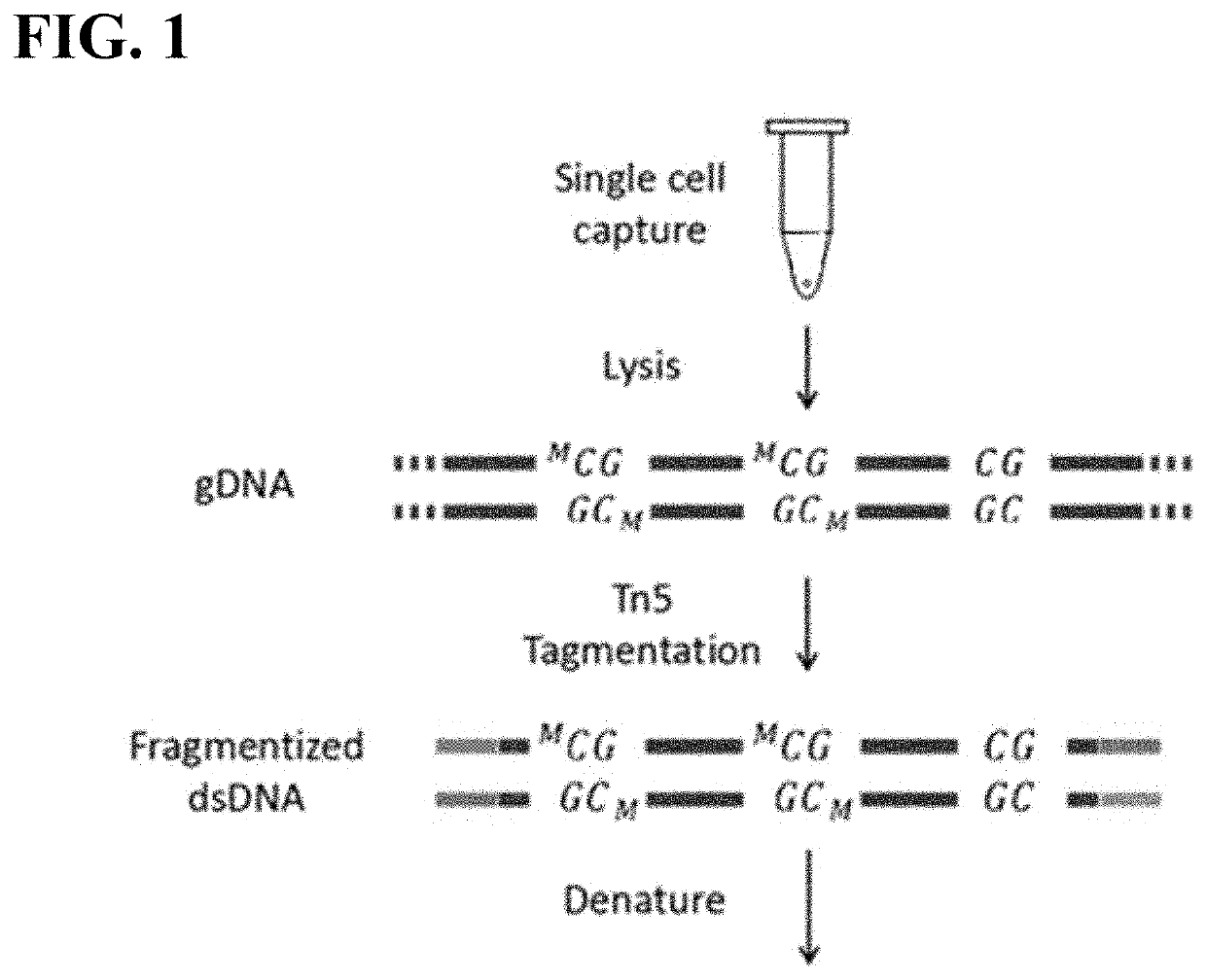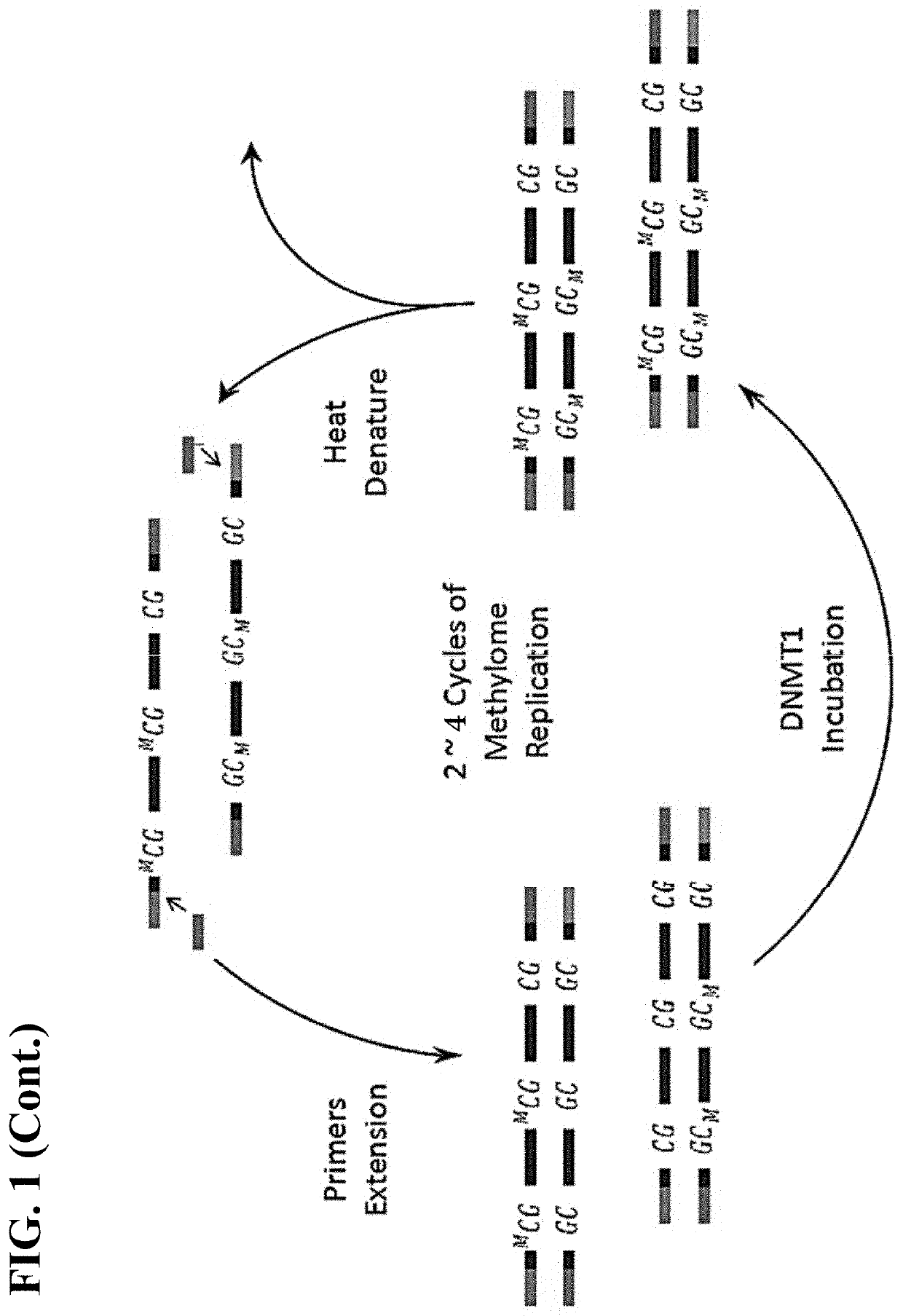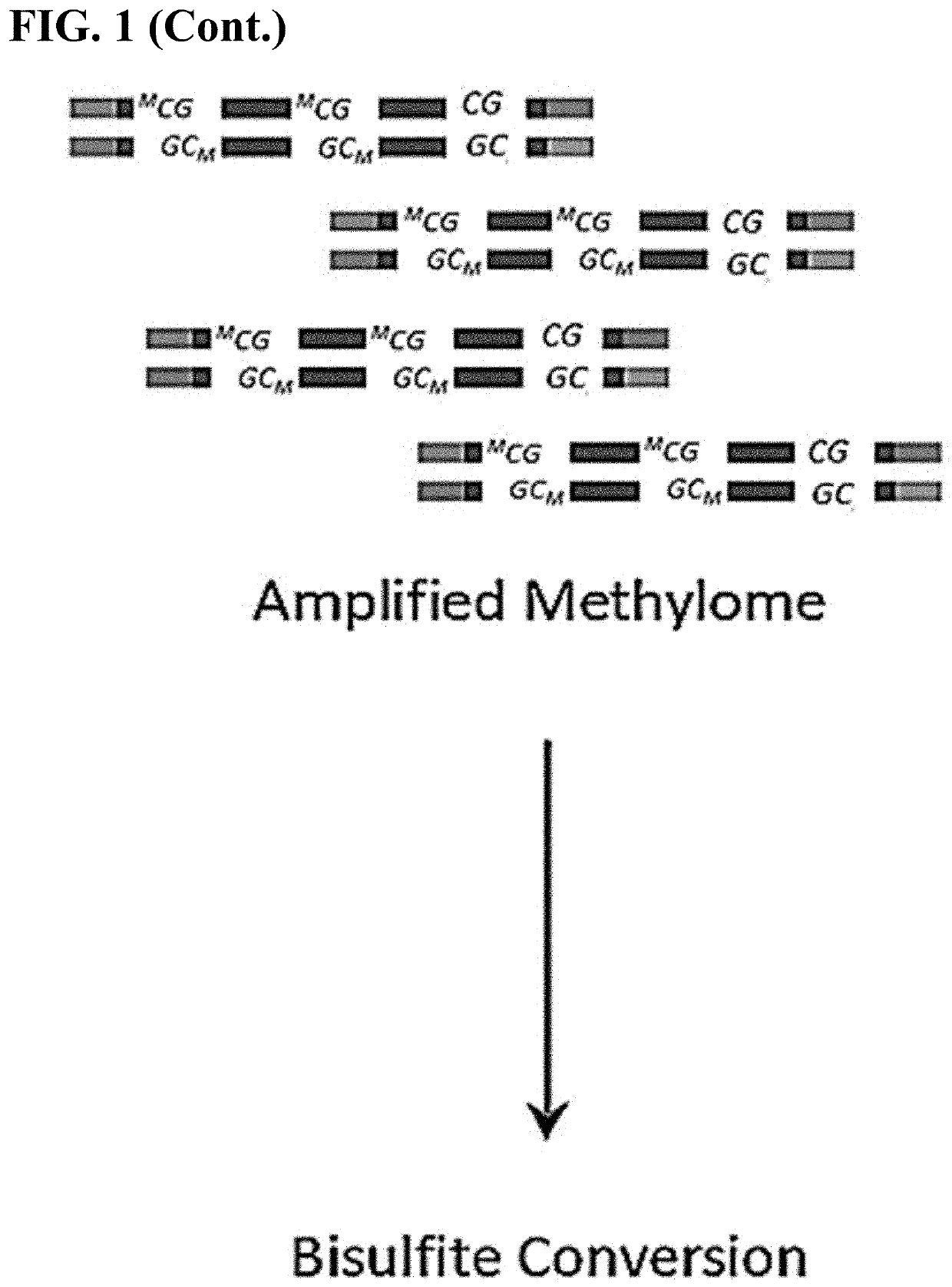Methods of Amplifying DNA to Maintain Methylation Status
- Summary
- Abstract
- Description
- Claims
- Application Information
AI Technical Summary
Benefits of technology
Problems solved by technology
Method used
Image
Examples
example i
Protocol
[0095]The following general protocol is useful for single cell whole methylome amplification. Isolation of single cells can be performed by mouth pipetting, laser dissection, microfluidic devices, flow cytometry and the like.
[0096]In general, a single cell is lysed in lysis buffer. The transposome with a primer binding site sequence and transposition buffer are added to the cell lysis. Protease is added after the tranposition to remove the transpoase from binding to the single cell genomic DNA. Deepvent exo-DNA polymerase, dNTP, PCR reaction buffer and primers are added to the reaction mixture to fill in the gap generated from the transposon insertion. After gap repair, the DNA fragments are denatured. The resulting ssDNA with complimentary ends thus will form a stem-loop structure. To amplify the stem-loop structures, a single primer PCR reaction with step-down annealing temperature is performed. The resulting extension products are then incubated with a methylation reagent...
example ii
Kits
[0112]The materials and reagents required for the disclosed methods may be assembled together in a kit. The kits for single cell whole genome methylome sequencing of the present disclosure generally will include at least the transposome (consists of transposase enzyme and transposon DNA), nucleotides, and DNA polymerase necessary to carry out the claimed method along with primer sets as needed. The kit will also include the DNMT1 and any buffers needed, including those containing cations as described herein. The kit may also contain a chelating agent for chelating such cations during the methylation step and may also include cations for replenishing the reaction media when primer extension is being carried out. The kit will also contain directions for creating the amplified methylome from DNA samples. The kits for early cancer diagnosis of the present disclosure generally will include at least the selected sets of primers, nucleotides, and DNA polymerase necessary to carry out t...
example iii
Methyl Transfer Efficiency
[0113]To determine the methyl-transfer efficiency of methods described herein, bisulfite sequencing (Miseq v2 chemistry kit, 2×150 bp pair end reads, 1,000,000 reads in total) was first performed on 10 pgs of fully methylated Hela gDNA and amplified DNA resulting from 1 round of single primer extension and DNMT1 incubation as described herein of 10 pg of fully methylated Hela gDNA. Among all the reads that uniquely aligned to human genome, 98.7% of the cytosine in CpG context are methylated for fully methylated Hela gDNA while 93.60% of the cytosine in CpG context are methylated for amplified DNA resulting from 1 round of single primer extension and DNMT1 incubation as described herein of 10 pg of fully methylated Hela gDNA. See FIG. 2. This indicates a methy-transfer efficiency of 95.1% during DNMT1 incubation. See FIG. 3.
[0114]DNMT1 is also known to have de-novo methylation activity. In order to infer the de-novo methylation rate of the methods described ...
PUM
 Login to View More
Login to View More Abstract
Description
Claims
Application Information
 Login to View More
Login to View More - R&D Engineer
- R&D Manager
- IP Professional
- Industry Leading Data Capabilities
- Powerful AI technology
- Patent DNA Extraction
Browse by: Latest US Patents, China's latest patents, Technical Efficacy Thesaurus, Application Domain, Technology Topic, Popular Technical Reports.
© 2024 PatSnap. All rights reserved.Legal|Privacy policy|Modern Slavery Act Transparency Statement|Sitemap|About US| Contact US: help@patsnap.com










